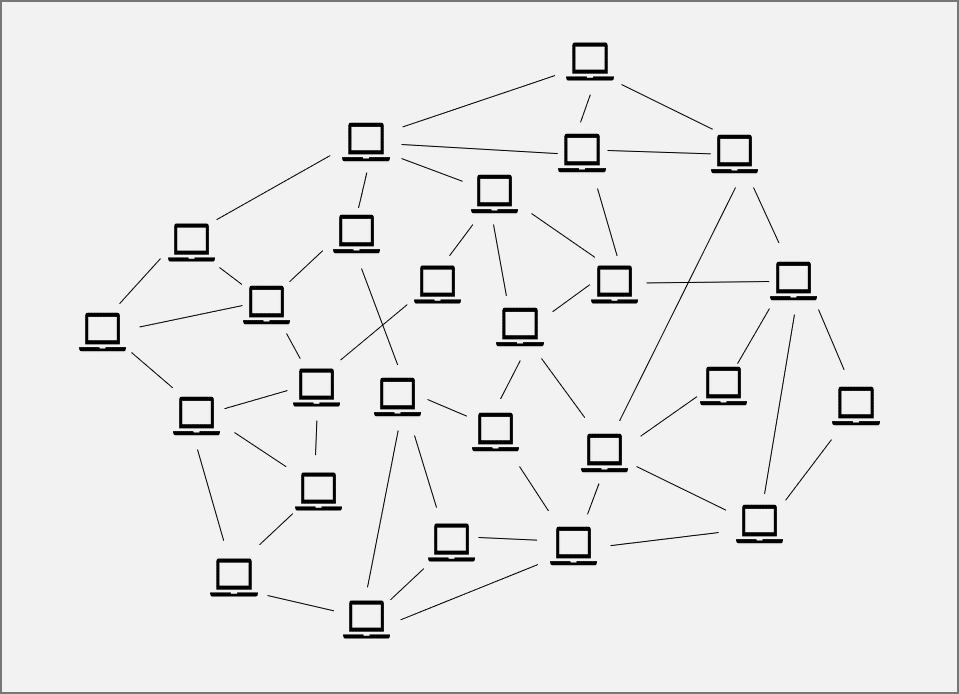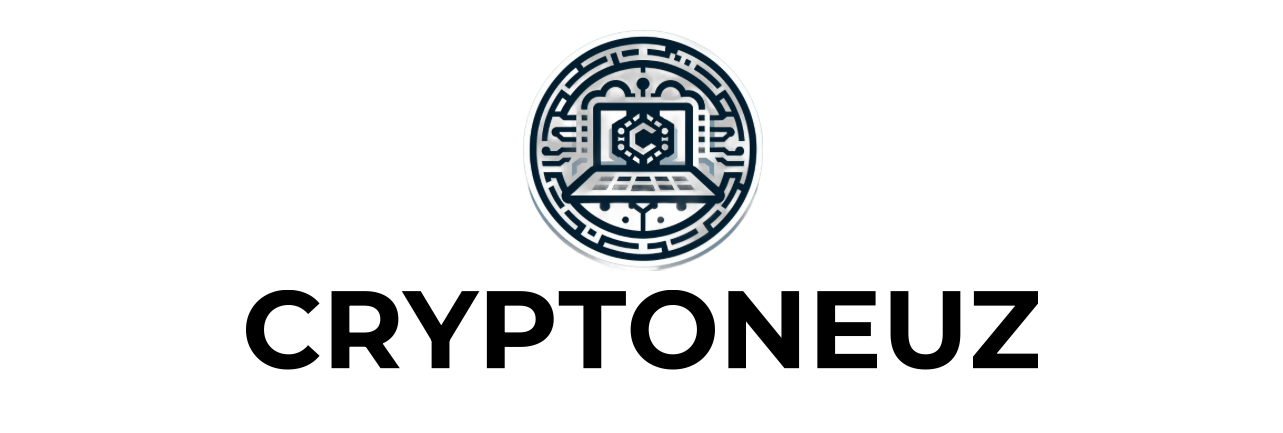What is a Blockchain Node? How to Create a Perfect Node
In the fields of telecommunications and software engineering, a “node” is a larger, related network part. But in crypto, a node is one of the parts that runs the program that checks and confirms each transaction on a blockchain.
A blockchain is a digital distributed ledger that keeps track of all the events that happen with cryptocurrency. One blockchain is made up of many “chained” bits, as the name suggests.
Nodes are what make up a blockchain. Nodes are usually computers that hold a copy of the main protocol and all of the transactions that have happened in a blockchain. Because the blockchain is decentralized, anyone in the world can run a server as long as they have access to a decentralized blockchain network and the right tools.
Find out about the different types of blockchain nodes, what they do, and how to run a node by reading on.
What is a Blockchain Node?
Blockchain nodes can send and receive info on the blockchain. They make sure that every transaction on the network is legal, records it, and sends it out to the network. They keep the blockchain running smoothly and make sure that transactions can be turned down if they are harmful. They are also in charge of running each blockchain’s consensus mechanism. This is the process that all blockchains use to confirm and approve transactions. Proof-of-work (PoW) and proof-of-stake (PoS) are the two most popular ways to reach a consensus.
Crypto mining, which needs powerful gear and software to solve tricky math problems and make new blocks, is done by miners using nodes, also called mining nodes.
Some blockchain nodes are also used as crypto wallets, just like regular wallets, but they store crypto instead of cash and cards.

Characteristics of Nodes
Nodes are the most important parts of a blockchain. In some cases, they make sure that blockchains are decentralized, which means that anyone on Earth with the will and resources can join as a server. As long as random people run nodes, information and data will stay open and democratic.
This helps make crypto a totally separate world, staying true to the ideas that Bitcoin’s creator, Satoshi Nakamoto wanted it to have.
There are different kinds of blockchain nodes, and each one helps with a different part of the blockchain. Because of this, there are different kinds of nodes that are designed for different purposes.
Nodes and workers for the blockchain
Cryptocurrency mining is used to verify activities on a lot of blockchains, including Bitcoin. Here are the blockchain nodes and users for this system. A miner is a special kind of node that verifies groups of transactions and gets paid in cryptocurrency for doing so. Nodes and miners do different things during the transaction process.
As we already said, the process starts with nodes verifying transactions. There is a race among miners to be the first to confirm those transfers. How they do this is based on how the blockchain handles agreement. Most of the time, miners compete to be the first to answer a math puzzle. This is called “proof of work.”
The miner who wins puts all the deals into a block and makes sure they are correct. Then, it sends the block out to the network so that the nodes can look it over. After making sure that everything in the block is correct, each node adds the legal block to its own blockchain.
There aren’t always miners or blockchains that use mining. There are other ways to reach a consensus that choose who confirms transactions in different ways. For instance, in proof of stake, people who want to take part must lock up their cryptocurrency funds as security.
The Types of Blockchain Nodes
These are the different kinds of blockchain nodes:
- Archival full nodes
- Pruned full nodes
- Light nodes
- Masternodes
- Mining nodes
- Authority nodes
- Staking nodes
- Lightning nodes
- Full nodes
All of these kinds of blockchain nodes won’t be in the same system. How it is set up depends on the blockchain and what it needs. This is a list of the different kinds of nodes in a blockchain:
1. Archival Full Nodes
This means that an archival full node keeps the whole blockchain ledger, which includes all the transactions from the very first one to the most current one. There needs to be a lot of memory on this kind of node because blockchains can take up a lot of space.
2. Pruned Full Nodes
That’s how much memory a trimmed full node can hold. It gets the blockchain and then deletes blocks, beginning with the oldest ones. This is called pruning, and the blocks aren’t really gone because their metadata and order are still there. As long as it doesn’t go over its limit, this node will hold the newest blockchain events. If the size cap is 1 GB, for example, it will hold the most recent 1 GB of transactions.
3. Light Nodes
Light nodes, which are also called “lightweight nodes,” don’t hold all of a blockchain’s data. They only keep a small part of the data instead, but they still make sure that transactions are correct. A lot of them are crypto wallets. Light nodes connect to full nodes and connect wallets to the blockchain. It’s easy to use this to buy, sell, and trade cryptocurrency on a crypto market using the blockchain.
4. Masternodes
Full nodes and masternodes are the same thing. They can’t add new blocks to the blockchain, though; they can only verify and store transactions. Masternode users get the blockchain’s native cryptocurrency as a reward for their work validating transactions.
5. Mining Nodes
A mining server is a part of the process of mining cryptocurrency. The blockchain’s consensus method is used to choose which mining nodes to use. In the case of proof of work, a block of transactions is only confirmed by the first mining node that can solve a math problem. Every mining node can have one miner or a mining pool, which is a group of miners who work together.
6. Authority Nodes
An authority node is one that was chosen by the group or society that is running a blockchain. That kind of blockchain has a screening process that nodes must go through. For instance, blockchains that use a proof-of-authority method only allow approved nodes that are run by node operators who have given proof of who they are.
7. Staking Nodes
Staking is the act of putting up digital funds as collateral on a staking node. In proof-of-stake blockchains, staking nodes are chosen to confirm blocks of transactions. A staking node can be made up of just one person or a staking pool, which is a group of people who pool their crypto funds to improve their chances of being chosen to confirm blocks.
8. Lightning Nodes
A lightning node makes a separate network that users can join to that is not part of the blockchain. This lets transactions happen outside of the blockchain. After the transactions are handled, they are sent to the main blockchain. Lightning nodes are helpful on blockchain networks that are very busy and have high transaction fees and slow processing. These nodes make it possible for trades to happen quickly and cheaply.
9. Full Nodes
There is a full blockchain on full nodes. Full nodes hold each block on the chain. Full nodes are usually run by people who know a lot about the blockchain. This makes them perfect for validating transactions.
To store all the blocks that make up a blockchain, you need a lot of room. But blockchain nodes can be “compressed” by pruning, which means getting rid of extra data that isn’t needed to save room. This makes room for more activities and speeds up the network.

How Important Node Size is
If you want to set up a blockchain node on some controlled blockchains, you have to go through a registration process. Some say that this leads to control because only approved nodes are run.
Nodes need different kinds of technology depending on the blockchain. Needs that are too strict can stop regular people from having a node, which is bad for decentralization. A lot of people have said that Solana’s node standards are too strict, which could make the protocol seem more centralized.
How to Create a Blockchain Node
Setting up a blockchain nodes is easier than you think. Just follow these three steps:
- Get the right hardware for the node. You can set up a node on your computer, but it might slow it down, so many node users use separate devices to run their nodes.
- Get the blockchain node software or program and install it on your computer.
- Run the app everyday. You don’t have to run it all day, but the blockchain might need it to be done at least once.
Hardware and an internet access are the two most important things you need to set up a blockchain node. If you want to run an archival full node that saves the whole blockchain, you need a device with a lot of memory. Also, blockchain nodes upload a lot of data. To make sure you don’t run into any problems, check your internet plan’s upload limits.
Remember that to run a blockchain node, you’ll need a lot of space, memory, and hardware power. You’ll also need fast internet and the most recent version of the operating system.
Make sure that your system can run continuously for at least six hours every day. A lot of computer types and operating systems go into a “sleep” or “low-power” mode when they’re not being used. This saves power. This feature should not be on in your system, and it should be able to work for long amounts of time without getting too hot or slowing down.
You’ll need the right tools to run your node after you have the right hardware. You’ll need to download the software that works with the blockchain you want to run a node on since blockchain nodes don’t come with software that works with all blockchains.
It will take a lot of room, time, and energy to run a node, so plan ahead.
Also Read: What is a Transaction Hash/Hash ID in Crypto?

Conclusion
Running a node is a great way to be a part of the blockchain of a coin, especially if you want to get paid as a miner or a validator. But in order to mine, stake, and run light nodes, you need advanced tools and technical know-how.



